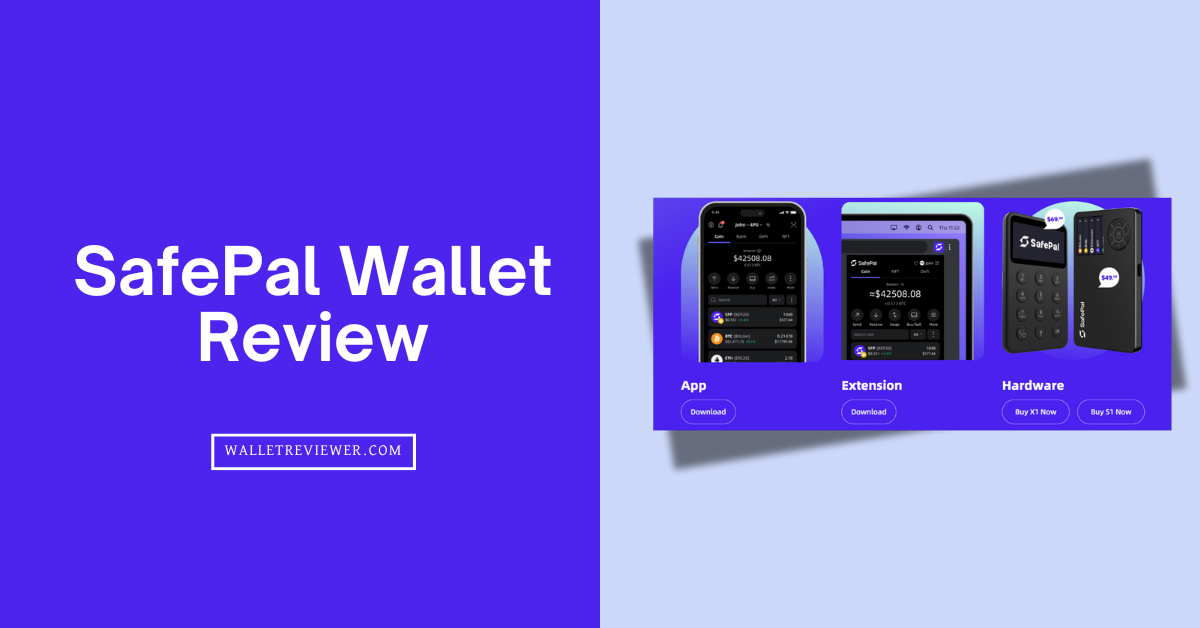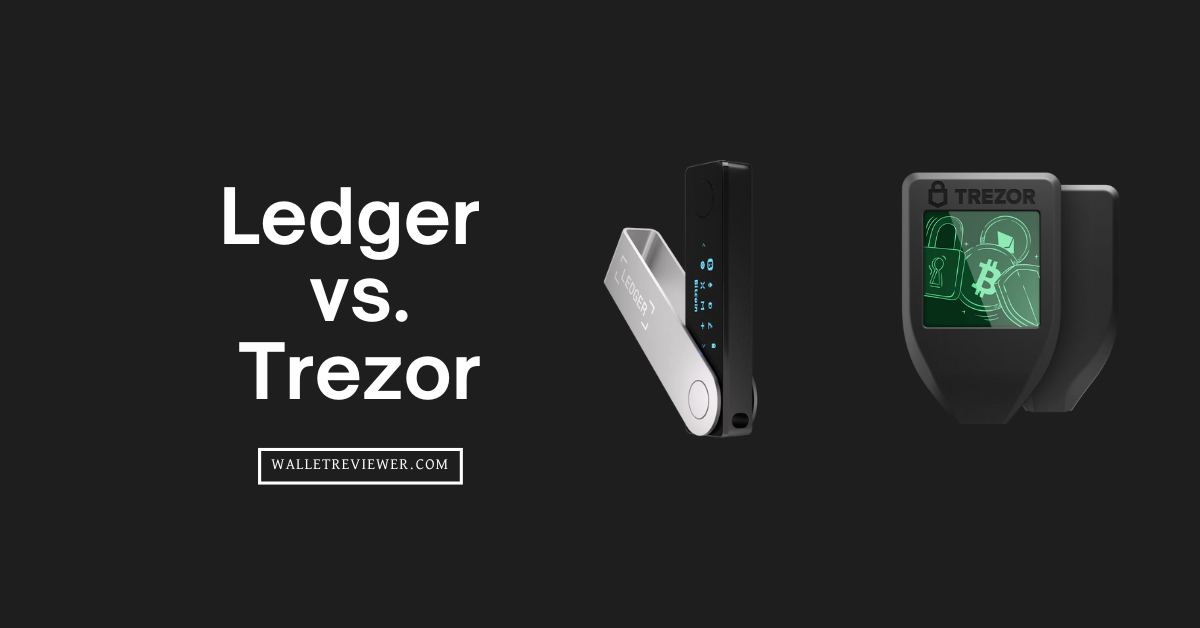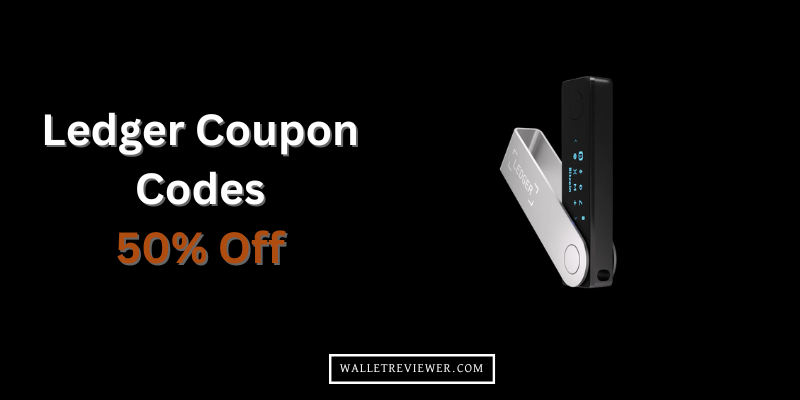Well, if you’ve been searching for a secure crypto wallet that’s easy to use, you’ve probably heard of the SafePal crypto wallet. In this SafePal wallet review, you’ll know exactly what it is, what it does well, where it falls short, and whether it’s the right wallet for your needs.
We’ll cover its different hardware wallets, security features, coin support, and even how to use the SafePal app for things like staking and sending crypto.
SafePal Wallet Review: What Is It?
SafePal is a cryptocurrency wallet ecosystem that offers both a mobile software wallet and several hardware wallet devices. The company was founded in 2018 (in Singapore) with backing from Binance Labs, which gives it some serious credibility. SafePal has grown fast, and today, it’s reportedly serving over 20 million users in 190+ countries.
So, what exactly does SafePal crypto wallet include? First, there’s the SafePal mobile app, a free app for iOS and Android that acts as a hot wallet (software wallet). You can use it on its own to store coins, buy/sell crypto, swap tokens, use DeFi dApps, and view NFTs.
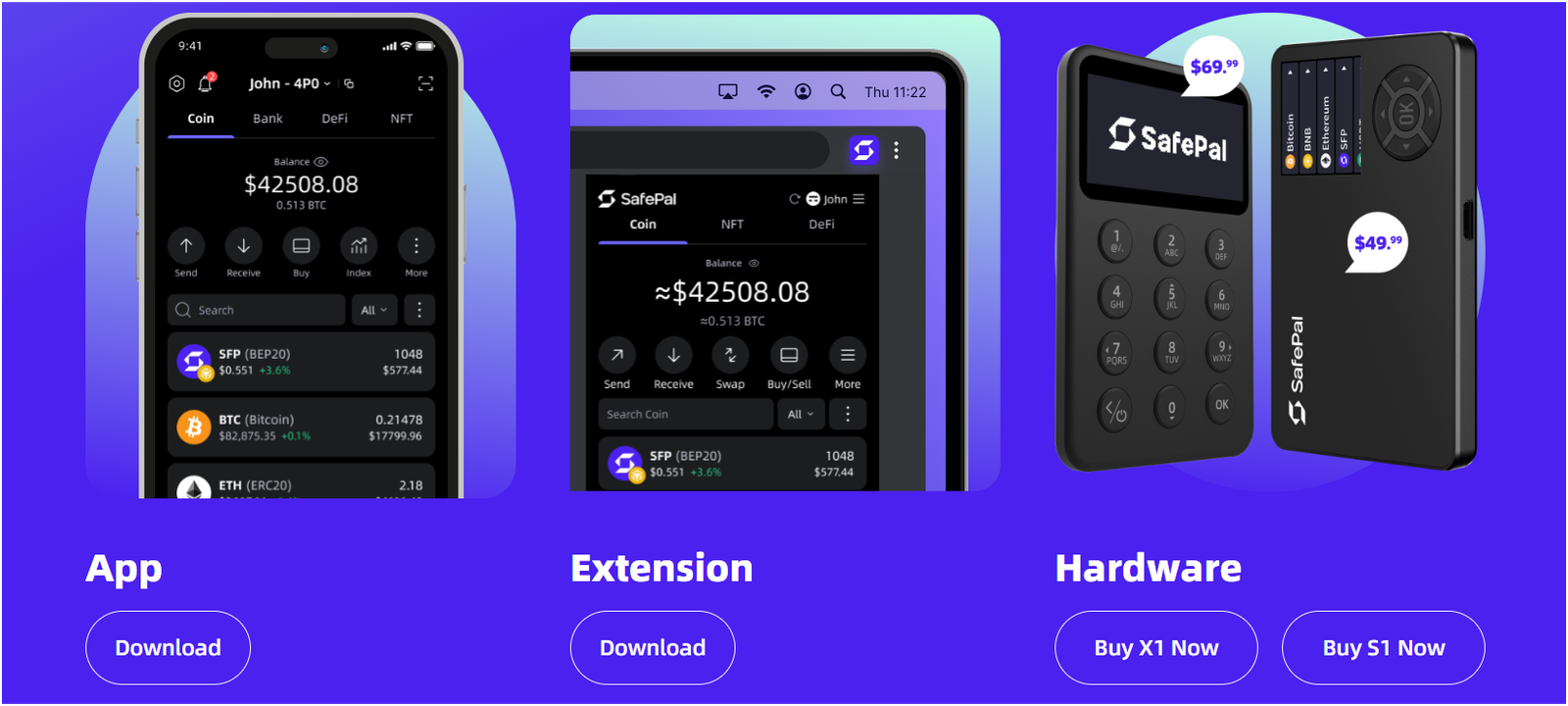
Second, SafePal offers three hardware wallets: the SafePal S1, SafePal S1 Pro, and SafePal X1, which are cold storage devices that keep your private keys offline for maximum security. These hardware wallets integrate with the SafePal app (and a browser extension), so you get the convenience of the app while your coins stay protected in cold storage.
And importantly, SafePal supports a wide range of cryptocurrencies and blockchains (we’ll get into details later). So, whether you hold Bitcoin, Ethereum, BNB Chain tokens, Solana, or even NFTs, SafePal likely has you covered.
Also, check out my guide on the best cold storage wallets…
What I Like About SafePal Wallet (Pros)
- Robust Security at a Low Cost: SafePal’s hardware wallets are much more affordable than big-name competitors (devices range from about $50 to $90), yet they pack strong security features. Each device has a certified secure element chip (rated CC EAL5+ or EAL6+ for tamper resistance), self-destruct mechanisms to wipe data if someone tries to physically hack it, and PIN/passphrase protection. You’re basically getting Ledger/Trezor-level security for a fraction of the price, which is pretty awesome.
- 100% Offline Storage (Air-Gapped): The SafePal S1 and S1 Pro devices are completely air-gapped – no USB data connection, no Bluetooth, no Wi-Fi. They sign transactions by scanning QR codes, so they never directly connect to the internet.
- Supports Tons of Coins and Blockchains: SafePal lets you manage a huge variety of cryptocurrencies. It supports 200+ blockchains and well over 10,000 tokens (basically “unlimited” tokens when you include ERC-20, BEP-20, etc.). You can hold Bitcoin, Ethereum, BNB Smart Chain, Polygon, Solana, Tron, Avalanche, Cardano, Dogecoin, XRP, Polkadot, and many more – plus all the tokens on those networks. NFTs are supported, too.
- Integrated Mobile App with Rich Features: The SafePal mobile app isn’t just a basic wallet interface. It’s packed with features like built-in swaps, a DApp browser for DeFi and NFTs, an NFT gallery, and even a fiat on-ramp/off-ramp via the SafePal “Bank” service. You can buy crypto with a credit card or bank transfer in the app, swap coins across different chains, and stake certain tokens to earn passive income.
- Hardware + Software Flexibility: I really like that SafePal gives you the option to use a hardware wallet or just the app, or both together.
What I Don’t Like About SafePal Wallet (Cons)
- Not Fully Open Source (except X1): SafePal’s software and firmware are mostly closed-source, which means the code isn’t publicly audited by the community (unlike, say, Trezor, which is fully open source).
- QR Code Signing Can Feel Slower: The air-gapped QR code system on the S1 and S1 Pro is very secure, but it’s a bit cumbersome for frequent use. To confirm a transaction, you have to scan a QR on your phone with the device camera, then scan the device’s QR back with your phone. It only takes maybe 10-20 seconds, but doing multiple transactions in a row or interacting with many DeFi apps can become tedious compared to just clicking a button in a connected wallet.
- Battery and Hardware Limitations: The SafePal hardware devices are battery-powered and need periodic charging, which is worth mentioning. On a full charge, the S1 Pro can last around 3-4 weeks of casual use (500mAh battery), the original S1 about 2-3 weeks (400mAh), and the X1 has a smaller 200mAh battery (roughly 2 hours of continuous use, or several days to a week of on-and-off use). It’s not a huge deal – you can recharge via USB-C in a couple of hours – but the battery can drain even when not in use, so you might pick it up after a month and find it needs charging. Also, a few users have reported battery degradation after a couple of years.
- Limited Desktop Support: SafePal is very mobile-centric. If you prefer using a desktop interface for your wallet, SafePal’s option is a browser extension (available for Chrome, Firefox, and Edge) that syncs with your mobile or hardware wallet. However, unlike Ledger or Trezor, which have dedicated desktop apps (Ledger Live, Trezor Suite), SafePal crypto wallet doesn’t have a full standalone desktop program with all features.
Is SafePal Crypto Wallet Safe to Use? Security Reviewed
Yes, SafePal is generally very safe for managing your crypto, as long as you follow best practices. Here’s why:
- Secure Element Chips: All SafePal hardware wallets contain a dedicated secure element (SE) chip with high security certification (EAL5+ or EAL6+).
- Offline Operation: The SafePal S1 and S1 Pro are completely offline devices; they don’t connect via USB (except for power/updates), Bluetooth, WiFi, or NFC. The only way they communicate is by QR codes, which is a one-way data transfer.
- Self-Destruct Mechanism: SafePal crypto wallet has built-in sensors and mechanisms to detect tampering. If someone tries to open the device casing or manipulate the electronics, the wallet is designed to wipe itself (erase the private keys) to prevent theft.
- PIN, Passphrase, and 2FA: When you set up your SafePal, you create a PIN code that is required to unlock the device or the app. After a certain number of wrong PIN attempts, the device can factory reset itself (protecting against brute force guessing). The keypad on the device even randomizes the numbers each time (so no one can guess your PIN from screen smudges). The wallet also supports passphrases (25th word option) for an extra hidden wallet if you choose. Additionally, the SafePal app can be secured with a biometric lock (fingerprint/Face ID) and a pattern or password.
- Recovery Seed Backup: SafePal uses standard BIP39 12-word or 24-word recovery phrases for backup. This means if your device is lost or damaged, you can recover your funds using the seed words on a new SafePal or even a different brand wallet that supports the standard. It’s safe as long as you keep those words secret and offline. The importance of the seed is always stressed during setup. SafePal also sells the SafePal Cypher (a steel plate for backing up your seed phrase) to help you secure it against fires, water, etc. Basically, SafePal gives you the tools to ensure you can recover from any disaster safely.
- Firmware Updates and Audits: The SafePal wallet team actively releases firmware updates every few weeks to add new features and patch any issues.
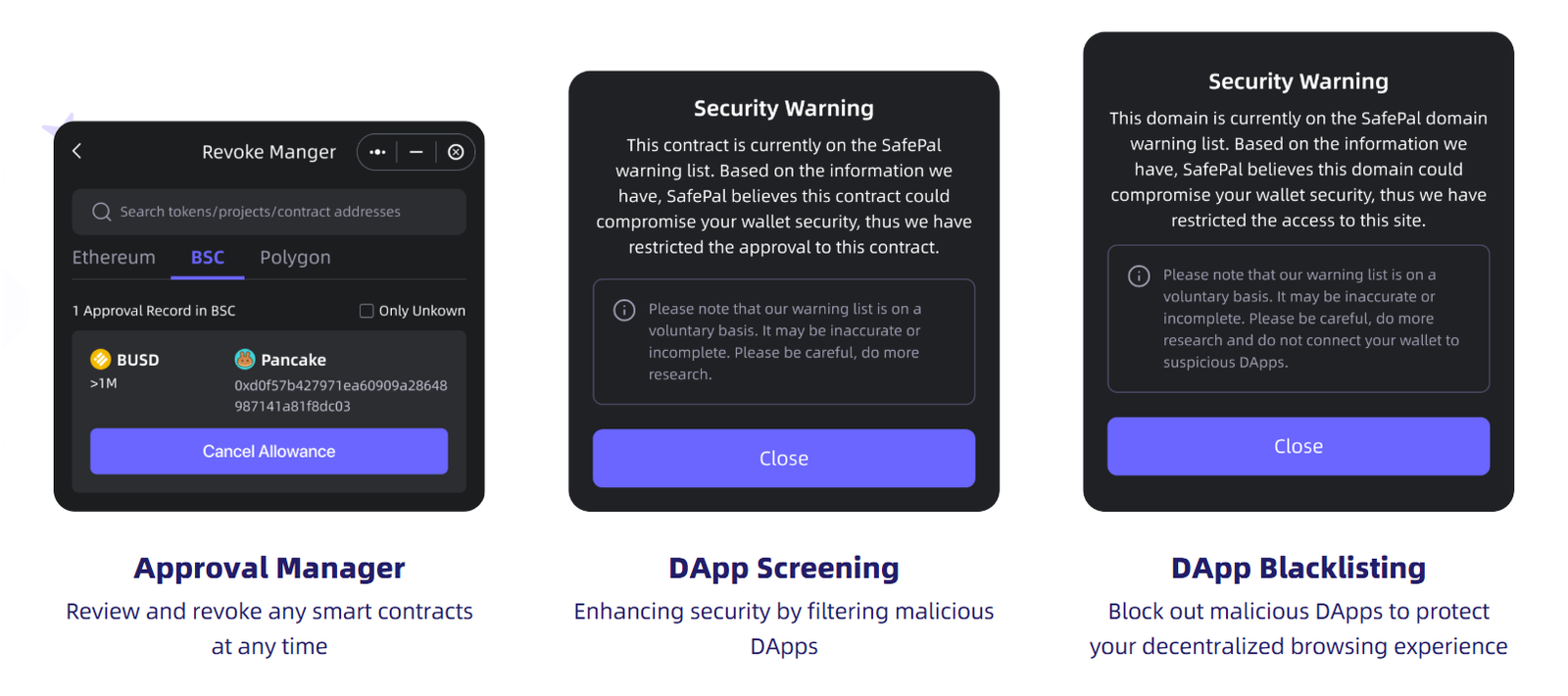
Is SafePal Crypto Wallet a Scam?
No, SafePal is NOT a scam. It’s a legitimate product and company that has been operating for years with a solid reputation. SafePal wallet was incubated by Binance Labs (the venture arm of Binance exchange) back in 2018, which gave it early credibility.
The company is headquartered in Singapore and has an official presence; you can find their team, support center, and active social media channels. Thousands of people have purchased SafePal hardware wallets (you can see plenty of unboxing videos, reviews, and community discussions online).
Note: always download the SafePal app from the official source (App Store, Google Play, or safepal.com), and only buy hardware from the official website or authorized resellers. SafePal’s own site has a verification tool to check your device’s authenticity when you set it up, which is a nice feature to ensure you didn’t get a tampered unit.
SafePal Crypto Wallet Review: All Hardware Wallet Models
SafePal currently offers three hardware wallet models (plus an accessory for backups). Each model has its own strengths, so you can choose which fits you best. Let’s go through them:
SafePal S1: Budget-friendly Option
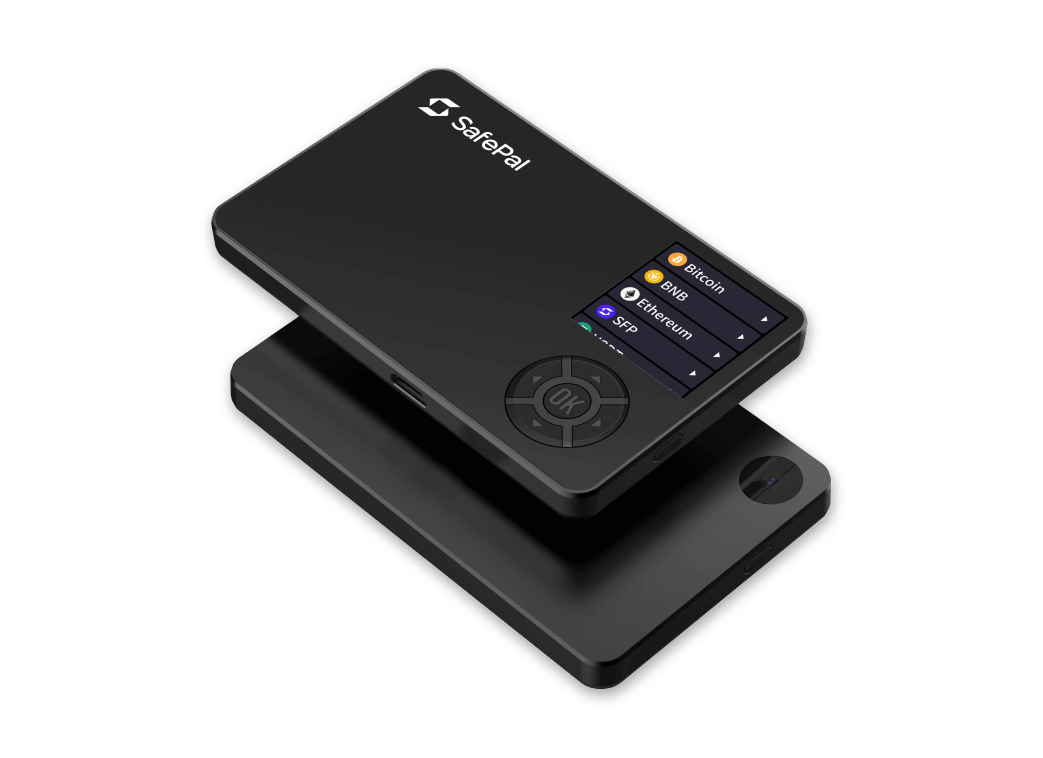
The SafePal S1 is the original hardware wallet from SafePal team. It’s a compact device about the size of a credit card (just a bit thicker). The S1 has been around since 2019 and made a name for itself as one of the most affordable secure crypto hardware wallets on the market.
- Air-Gapped Security: The S1 operates 100% offline. It has no wireless or USB data connection. You communicate with it by scanning QR codes on its built-in camera. This design keeps it extremely secure from remote attacks.
- Security Features: Inside the S1 is a secure element chip (currently with CC EAL6+ rating) that stores your keys safely. It also has motion sensors and a self-destruct mechanism to wipe data if someone tampers with it.
- Battery: It has a built-in 400mAh rechargeable battery. That lasts roughly up to 20 days with light use (or about 420 hours standby).
- Price: The S1 is very budget-friendly at around $49.99. This low cost made it super popular as a “first hardware wallet” for many people who didn’t want to spend $100+ on Ledger or Trezor.
Read my full SafePal S1 review…
SafePal S1 Pro: Best for Advanced Users
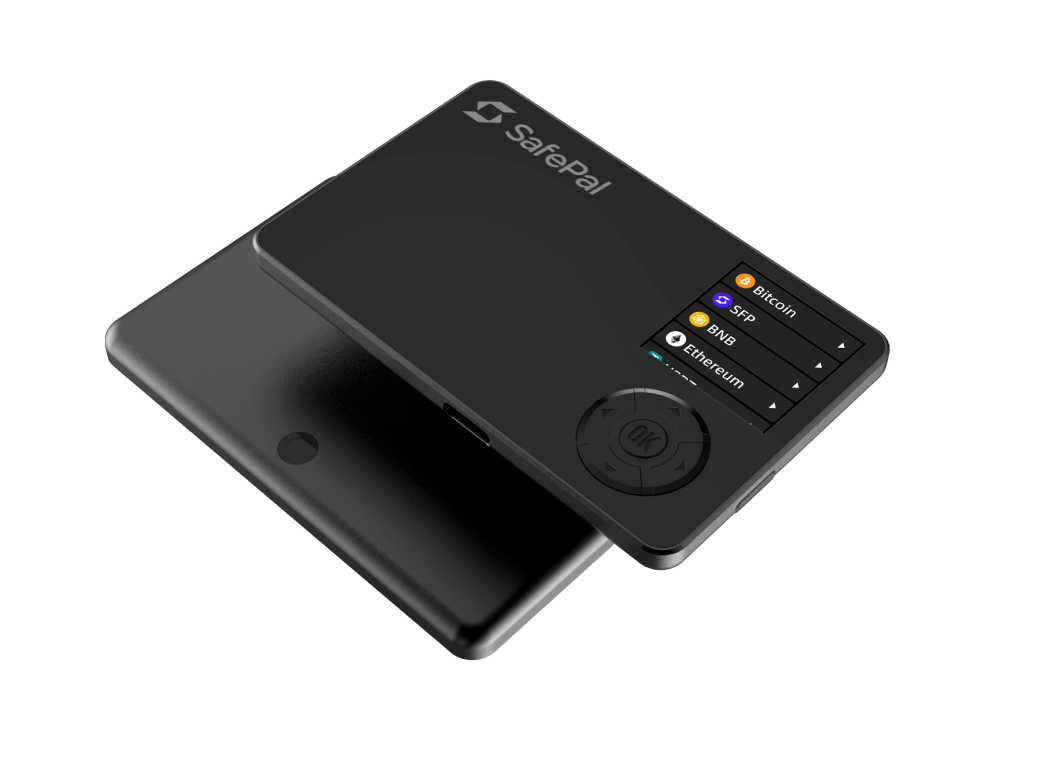
The SafePal S1 Pro is an upgraded version of the S1 that launched in 2023.
- Design and Build: The first thing you’ll notice is the S1 Pro’s build quality. It has a tempered glass front panel and an aluminum alloy body, giving it a more solid, premium feel compared to the plastic of the original S1.
- Air-Gapped and Secure: Like the S1, the Pro model is fully air-gapped (no Bluetooth/USB data).
- Price: The S1 Pro retails around $89.99. So it’s about 40 bucks more than the standard S1. For that extra cost, you’re getting the nicer build, larger battery, and an “enhanced” experience. It’s still cheaper than many competitor hardware wallets, which makes the Pro a compelling option if you have the budget.
SafePal X1: Best for MOBILE Users (Bluetooth Support)
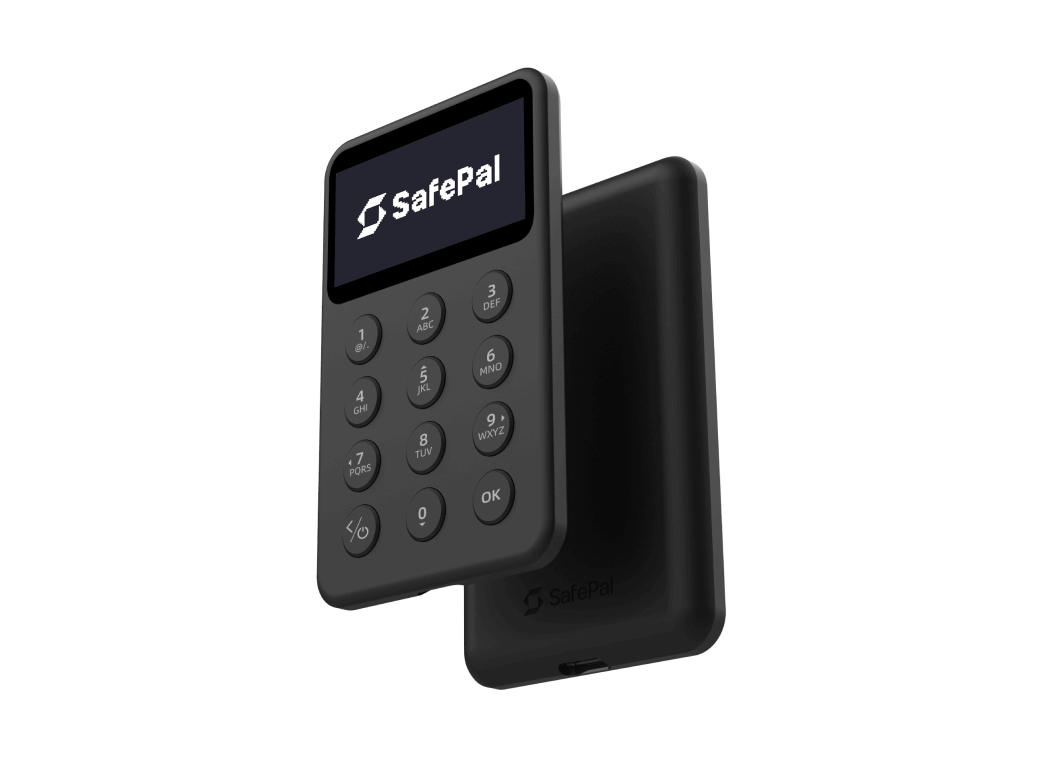
The SafePal X1 is the newest addition (released around 2023/24), and it takes SafePal in a slightly different direction. The X1 is all about convenience and openness while still keeping security tight.
- Bluetooth Connectivity: The X1’s standout feature is that it uses Bluetooth 5.0 to connect with your phone (or computer via the SafePal extension). This means no more QR code scanning for transactions – the device can communicate with the app wirelessly.
- Open Source Firmware: SafePal X1 is marketed as fully open-sourced. True to that, SafePal released the source code for the X1’s firmware publicly.
- Battery: The trade-off for the X1’s compact size and many buttons is a smaller battery, at 200mAh. SafePal says that it gives about 2 hours of continuous usage. In everyday terms, if you’re only using it briefly here and there, you might get roughly a week or more before needing a charge – but if you left it on in Bluetooth mode, it would drain in a couple hours.
- Price: The SafePal X1 is priced at $69.99, placing it between the S1 and S1 Pro. That pricing is quite competitive considering it’s open source and has Bluetooth.
Read my full SafePal X1 review…
SafePal Alternative Cryptocurrency Wallets (Comparison)
| Aspect | SafePal (S1/S1 Pro/X1) | Ledger Nano X | Trezor Safe 5 | Trust Wallet (Mobile) |
|---|---|---|---|---|
| Type | Hardware wallet + App (cold storage + hot wallet combo) | Hardware wallet | Hardware wallet | Software wallet (mobile app) |
| Price | $49 – $89 (depending on model) | $149 (Nano X) | $169 (Model T) | Free (app download) |
| Security Features | Secure Element (EAL5+/6+), PIN, self-destruct for tamper, air-gapped or Bluetooth signing. | Secure Element (EAL5+), PIN, optional passphrase, Bluetooth connectivity. | Open-source firmware, PIN, passphrase, CC EAL6+ | Keys stored encrypted on phone, protected by phone security (biometric/PIN). Always online. |
| Open Source? | Partially – X1 firmware is open source; S1/Pro mostly closed-source. | Mostly closed-source (secure chip and Ledger Live are proprietary). | Yes, fully open-source firmware and software. | Yes, app is open-source. (Community can audit code.) |
| Coins Supported | 200+ blockchains, 30k+ assets (incl. tokens, NFTs). Very broad multi-chain support. | 100+ app-supported assets (1,500+ tokens with Ledger Live; more via 3rd-party apps). | 8,000+ coins/tokens (via Trezor Suite or third-party wallets). | 100+ blockchains, 10M+ assets (supports basically any token with custom add). |
| Connectivity | S1/Pro: Offline QR code; X1: Bluetooth to mobile; all use SafePal mobile or extension for interface. | Bluetooth and USB (Nano X connects to phone or PC via Ledger Live). | USB-C to computer/phone (no wireless). | Internet via mobile data/WiFi (since it’s an app on your phone). |
Read my other comparison guides:
Ease of Use and Community Feedback
Using the SafePal crypto wallet in everyday life is generally a smooth experience, especially if you’re already comfortable with smartphone apps. The SafePal mobile app ties everything together, and it’s designed with an intuitive layout.
Here’s what you can expect in terms of ease of use:
- Mobile App Interface: The app has a clean dashboard showing your assets across different chains, all in one view. It’s easy to toggle between wallets or switch networks. Sending and receiving crypto is as simple as tapping the asset, hitting “Send” or “Receive,” and following the prompts. The app supports QR code scanning to avoid typing long addresses. Features like swapping tokens or accessing DApps are built-in but don’t clutter the basic wallet functions – they’re neatly tucked in menus until you need them.
- Hardware Interaction: If using S1 or S1 Pro, interacting with the device (for confirming a transaction) means a quick QR scan dance. It might sound complex, but in reality, the app literally shows “Step 1: scan this QR with your device” and then “Step 2: scan the device QR with your phone”. It’s pretty foolproof once you’ve done it once. With the X1, the process is even simpler – the app finds the device via Bluetooth, and you just press a button on the X1 to approve transactions. Many people report that after a day or two of use, SafePal’s workflow becomes second nature. It’s designed not to overwhelm. You don’t have to manually copy any files or use a computer at all (except when doing firmware updates), which is a big ease-of-use win over some older wallets.
- Community Feedback: The general community sentiment toward SafePal crypto wallet is positive. On forums like Reddit, users often praise SafePal for “combining the convenience of [Trust Wallet] with the security of a hardware wallet.” A friend on r/Bitcoin even said the SafePal S1’s UI was “extremely user-friendly compared to most of the other wallets”. Many appreciate that you can manage everything from your phone and aren’t tied to a PC. There are, of course, some mixed opinions: a few advanced users have raised concerns about the closed-source aspect, but with the X1 now open-source, that’s been alleviated. Some early adopters had minor complaints like the camera being finicky in low light or the device not being recognized by a PC (which was usually solved by using the provided USB cable or updating drivers). These individual cases aside, SafePal gets a lot of love for hitting the sweet spot in usability.
- Customer Support and Resources: Another part of ease-of-use is the help you get when something isn’t clear. SafePal has a knowledge base and a pretty extensive FAQ on their support site. They also have tutorial videos for things like setting up, upgrading firmware, using SafePal Earn, etc. If you encounter an issue, you can submit a ticket or ask in the community channels. Many users have reported quick help from SafePal wallet support – for instance, resolving an app glitch or guiding them through a firmware trouble. Knowing that support is reachable 24/7 (as SafePal claims) can give you extra confidence as you navigate the wallet.
SafePal App for Mobile Users
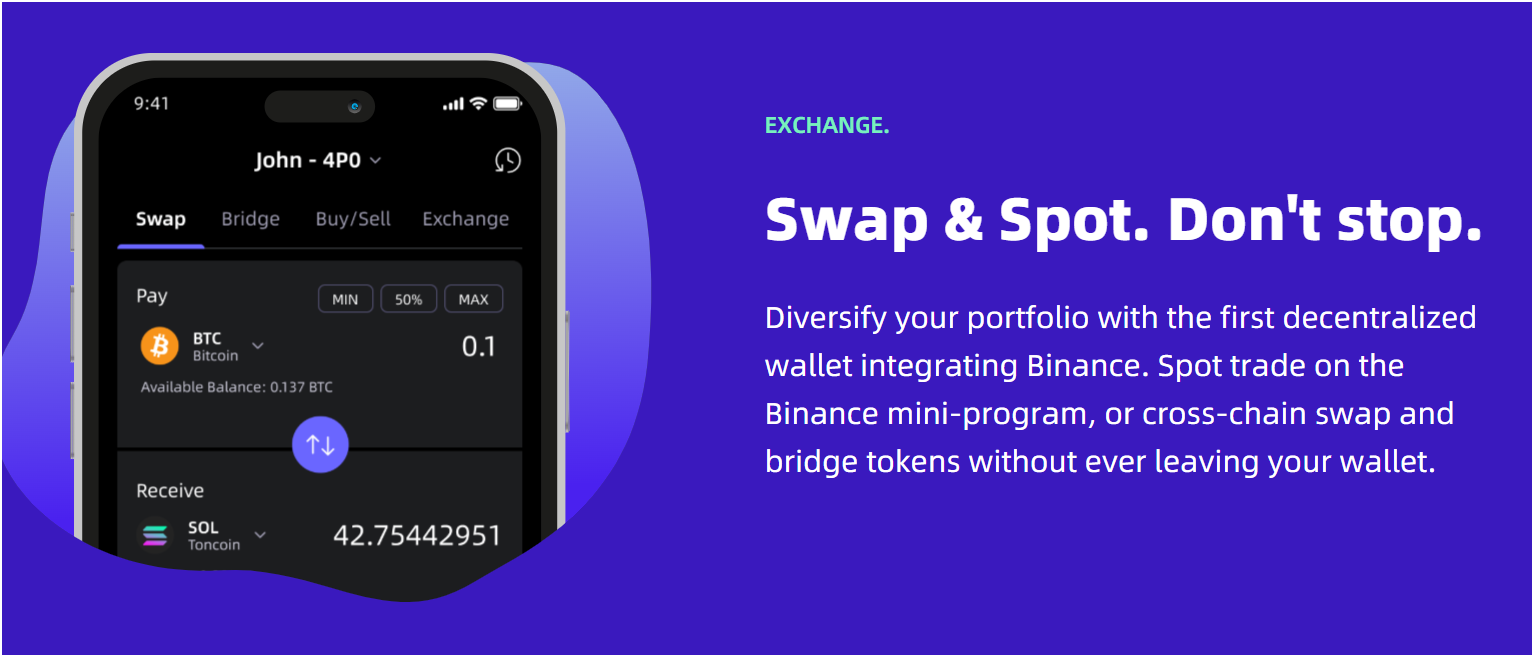
Let’s talk more about the SafePal mobile app, since it’s central to the whole SafePal experience (whether or not you use the hardware). If you prefer managing crypto on your phone, the SafePal app is built exactly for you. Here’s what you should know about it:
- Availability: The SafePal app is available for both Android and iOS. You can download it from the Google Play Store or Apple App Store – just search “SafePal”. Make sure it’s the official one by SafePal Tech. The app is free to download and use.
- Using it as a Software Wallet: You have the option to use the app as a standalone software wallet (hot wallet). During setup, you can create a new wallet right in the app, which will generate a 12-word recovery phrase for you to back up. The private keys are then stored on your phone (encrypted). This mode is great if you’re just getting started or testing the waters, as it doesn’t require any hardware purchase. The app will remind you vigorously to save your seed phrase because if your phone is lost and you didn’t back it up, you’d lose access. But as long as you wrote down the phrase, you can always restore it.
- Pairing with Hardware: If you have a SafePal hardware wallet (S1, S1 Pro, or X1), you’ll pair it with the app. This pairing is usually done by scanning a code or via Bluetooth. Once paired, the app essentially becomes a viewer and controller for the funds secured in your hardware wallet. You’ll see your balances and transactions in the app just like a normal wallet, but any sending of crypto requires approval on the hardware. The app can manage multiple wallets too – for example, you could have one purely software wallet in there and one that represents your hardware wallet, and switch between them.
- Interface and Features: The SafePal app’s main screen shows your total portfolio value (in USD or whatever fiat you choose) and a list of your assets. You can add new blockchain wallets easily (for instance, “Add Bitcoin wallet” or “Add Ethereum wallet”). There’s a discover section for SafePal Earn and dApps. Let’s break down a few key features:
- Buy Crypto: Through integrated partners, you can purchase crypto with a credit/debit card or bank transfer. SafePal has something called the “SafePal Bank,” which offers a fiat on-ramp with fees around 0.4% for deposits (pretty low). They even introduced a SafePal crypto debit card that you can use for spending crypto in daily life – that’s a newer feature tied into the app (imagine paying for Uber or flights with your crypto via the card).
- Swap and Trade: The app includes a Swap function where you can directly exchange one asset for another. It sources liquidity from various platforms (including decentralized exchanges). For example, you could swap some ETH for BNB right inside the app without manually going to an exchange. Just be mindful of network fees and slippage. There’s also a built-in crypto market tracker if you want to check prices or follow certain coins.
- DApp Browser: One standout is the DApp browser/Web3 section. This lets you connect to decentralized apps and DeFi services (like Uniswap, PancakeSwap, OpenSea for NFTs, yield farming protocols, games, etc.) directly through SafePal wallet. Essentially, the app can act like a Web3 wallet (similar to how MetaMask mobile or Trust Wallet browser works). It supports Ethereum, BSC, Polygon, Arbitrum, Solana, and more networks in the dApp browser. If you find a dApp not listed, you can paste its URL and connect via WalletConnect. This is super useful because it means you can participate in DeFi and NFT marketplaces securely with your SafePal hardware. The hardware will sign any transactions when you interact with those dApps, keeping you safe.
- NFT Support: The SafePal app has an NFT collectibles section. You can view and manage your NFTs on networks like Ethereum or BSC. It will display the images (if available) and details, which is neat for NFT collectors.
- SafePal Earn: As teased earlier, SafePal Earn is accessible via the app. It provides a list of staking and yield farming opportunities. You can stake coins like ETH, Polkadot, Cardano (or SafePal’s own token SFP) through the app’s interface. It shows the APY and lock duration for each. It even has some DeFi liquidity pools integrated. The app basically simplifies what would normally require using various DeFi apps – here you can find multiple earning options in one place. It’s great for users who want to put idle assets to work without leaving the wallet.
- Notifications and Tracking: The app can send push notifications for transactions (incoming funds alerts, etc.). It also keeps a transaction history log for each asset, which is handy if you need to review past operations. You can connect the app with SafePal’s browser extension as well, enabling a sync so that you can approve requests from your PC browser and then confirm on the mobile or hardware device. It’s a cohesive ecosystem.
- Security in App: When you first use the app, it will prompt you to set a login pattern or PIN and enable fingerprint/Face ID if available. This adds a layer in case someone gets your phone unlocked. The app encrypts your wallet data and can also be set to automatically lock after a short time idle. There is an “App Lock” feature you can toggle for extra safety. The recovery phrases you back up are never uploaded anywhere – it’s all local. If you ever uninstall the app or wipe your phone, you’d need those phrases to restore your wallets.
- Updates: The SafePal app gets updates pretty frequently (every few weeks, I’ve noticed an update on my phone with new features or improvements). This is good because it means the team is actively maintaining and improving the user experience, adding support for new coins or features as the crypto world evolves.
Read more: Best hardware wallet for crypto
SafePal Staking
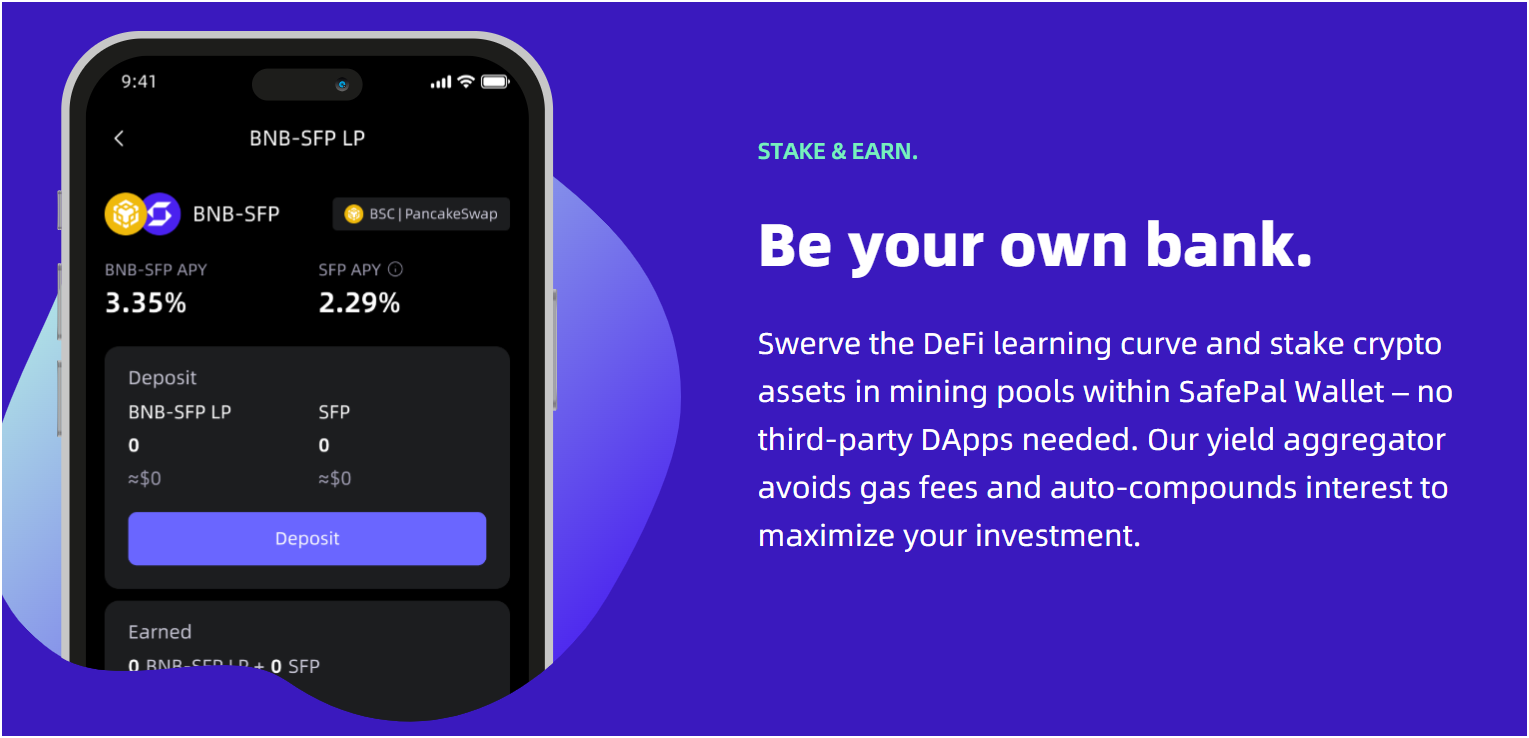
Well, one of the best parts of the SafePal ecosystem is the ability to stake your crypto and earn rewards directly through the wallet. SafePal makes this process fairly easy with its SafePal Earn feature.
SafePal Earn Feature: SafePal Earn is built into the app’s interface. When you navigate to Earn, you’ll see a list of available staking pools and liquidity mining opportunities. These are categorized by chain and protocol. For example, you might see options like:
- Staking Polkadot (DOT) – showing maybe ~10% APY, with info on bonding period.
- Staking Ether (ETH) – maybe around ~4% APY if it’s through a partner service (since direct Eth2 staking requires 32 ETH and a node, SafePal likely partners with a provider for smaller amounts).
- SFP token staking – SafePal’s own token, which often has a higher APY as an incentive (sometimes in double digits).
- Liquidity pool on a DEX – e.g., providing liquidity to a BSC DeFi pool or lending USDT on a platform – with varying APYs.
SafePal basically aggregates these opportunities from various networks (like Ethereum, BSC, Solana, etc.) and presents them in one spot.
How to Stake via SafePal Crypto Wallet
It’s designed to be simple for the user. You choose the asset you want to stake, and SafePal crypto wallet will show you available staking pools or validators.
For instance, if you want to stake ADA or ATOM, SafePal might let you delegate to a validator directly through the app. If it’s a DeFi pool, it might connect via WalletConnect in the background. The interface usually lets you select how much to stake, and then you confirm the transaction (which, if using hardware, you’d sign on the device).
The app clearly labels the APY (annual yield), the lock-up period (some staking is flexible, some requires you lock funds for a certain time), and even a risk level for DeFi pools. That helps you gauge what you’re getting into.
Rewards and Tracking
Once you’ve staked, the app will show your staked amount and accumulated rewards over time. For proof-of-stake coins, you typically can claim or withdraw the rewards periodically. SafePal will usually have a button to claim rewards when available.
Some networks automatically add rewards to your staked balance. SafePal Earn simplifies tracking by listing your positions and yields in one place. It’s basically acting like your personal crypto savings account dashboard.
Supported Staking Assets
The list can be updated, but popular ones you might find include:
- SafePal (SFP) – The SafePal token often has staking events or flexible earn options.
- BNB – Binance Smart Chain’s coin often has staking or DeFi farming opportunities through the app.
- Polkadot (DOT) and Kusama (KSM) – likely supported since SafePal wallet has those networks.
- Tron (TRX) – Tron has staking (called freezing) for bandwidth/energy, might be integrated.
- Cosmos (ATOM) – a major staking coin.
- Ether (ETH) – possibly via an ETH2 staking service integration.
Many others like Avalanche, Solana, Cardano etc., if not directly stakeable through the app, SafePal might offer those through third-party in-app services.
It also includes DeFi yield offerings like providing stablecoins to certain pools or participating in liquidity mining of new tokens. Those come with higher yields but also higher risk, which SafePal crypto wallet indicates with a risk label (e.g., “High Risk” for very high APY pools, meaning the token or smart contract might be less established).
How to Send Crypto Using the SafePal Wallet?
- Open Your SafePal Wallet App: On your mobile device, launch the SafePal app and unlock it (enter your pattern/PIN or use biometrics if set up). Make sure your SafePal hardware wallet is connected if you plan to use it for this transaction. For S1/S1 Pro, that means having the device on hand to scan QR codes. For X1, ensure Bluetooth is on and the device is powered up and paired (the app will show a connected icon).
- Select the Asset to Send: From the app’s main portfolio screen, tap on the coin or token you want to send. This will open the wallet page for that asset, showing your balance, recent transactions, etc.
- Initiate a Send Transaction: Tap the “Send” button on that asset’s page. This will bring up a form to enter the recipient’s address and the amount.
- Enter Recipient Address: You have a few options here. You can paste an address if you copied it from somewhere, or scan a QR code by tapping the scan icon (this opens your phone’s camera to scan the recipient’s address QR). Scanning is nice to avoid typos. Double-check that the address belongs to the same network as the asset (e.g., if sending USDT on Ethereum, the address should be an Ethereum address). SafePal will usually warn you if something doesn’t look right, but it’s good practice to verify.
- Enter Amount: Input how much of the asset you want to send. You can also often tap a “Max” button to send all available (minus a bit for fee if needed). The app will show the equivalent value in USD or chosen fiat, which helps you confirm you’re sending the intended amount.
- Review Network Fee: SafePal will automatically calculate the network transaction fee (gas fee) for you based on current rates. On networks like Ethereum, you might have options to choose slow/average/fast (with different fee amounts). On others like Bitcoin, you may adjust sats/vB if you’re advanced, but typically the default is fine for most cases. The fee required will be deducted from your balance (or in the case of Ethereum tokens, from your ETH balance for gas). Make sure you have a little of the base coin for gas (e.g., some BNB if sending BEP20 tokens, some ETH for ERC20 tokens, etc.). SafePal’s interface usually reminds you of this as well.
- Confirm Details: The app will show a confirmation screen with all the details: the from account, to address, amount, network fee, and total. Review this carefully. This is your chance to catch any mistakes (wrong address, wrong chain, etc.). Honestly, take a couple of seconds to verify the first and last few characters of the address match your intended recipient. SafePal also has anti-phishing words – if you set one up, it will display your secret phrase on this screen to prove the app is genuine and not a spoof.
- Initiate Signing: If everything looks good, tap “Confirm” (or “Next”) to proceed. Now, if you are using the software wallet (no hardware), the app will prompt you for your app security password or pattern to authorize the send. After that, it will broadcast the transaction to the network. If you are using a SafePal hardware wallet for this account, this is where the signing process comes in:
- For SafePal S1/S1 Pro (QR signing): The app will display a QR code on your phone which contains the unsigned transaction data. Turn on your SafePal device (enter PIN), go to the “Scan” function on the device, and scan the QR from your phone’s screen. The device will decode the transaction details and show you on its screen what you’re about to send (address and amount). If it looks correct, you’ll confirm on the device (typically by pressing a button). The device will then show a QR code on its own screen – this QR contains the signed transaction.
Now, scan that QR code using your phone’s camera (the app automatically opens a scanner for this after showing the initial QR). Once scanned, the SafePal app will have the signed transaction. - For SafePal X1 (Bluetooth): After you confirm in the app, your phone will communicate with the X1 via Bluetooth. The X1 device will beep or flash asking you to approve the transaction. Check the X1’s screen for the details (it will show part of the address and amount). If it’s okay, you press the confirm button on the X1. The signature is then transmitted back to the app via Bluetooth. No QR scanning needed in this case, it’s a bit more streamlined.
- For SafePal S1/S1 Pro (QR signing): The app will display a QR code on your phone which contains the unsigned transaction data. Turn on your SafePal device (enter PIN), go to the “Scan” function on the device, and scan the QR from your phone’s screen. The device will decode the transaction details and show you on its screen what you’re about to send (address and amount). If it looks correct, you’ll confirm on the device (typically by pressing a button). The device will then show a QR code on its own screen – this QR contains the signed transaction.
- Broadcast Transaction: After the hardware signing step, the SafePal app will broadcast the signed transaction to the blockchain network. You’ll usually see a “Transaction Sent” message or similar. The transaction will then be processed by the network miners/validators.
- Wait for Confirmation: You can view the outgoing transaction in the app’s history for that asset. It will likely show as “Pending” or “Unconfirmed” initially, with a spinning icon. Once the blockchain confirms it (time varies by network – could be seconds for BSC, minutes for Ethereum, up to 10-60 minutes for Bitcoin, depending on fee and congestion), it will show as confirmed. You can also tap on the transaction to see details, and often there’s a link to view it on a blockchain explorer (like Etherscan or BscScan) if you want to track it externally.
- Recipient Gets the Funds: Assuming everything went through, the crypto will arrive at the recipient address. If you sent between your own wallets, you’ll see the incoming transaction on the other side.
Final Verdict: SafePal Hardware Wallet Review
After diving deep into SafePal’s features, security, and user experience, here’s my honest SafePal crypto wallet review:
- SafePal’s Strengths: You get a lot for your money. The hardware wallets (whether S1, S1 Pro, or X1) deliver top-notch security practices like air-gapping, secure elements, and self-destruct protection, which put them on par with more expensive competitors. It truly can be your all-in-one crypto management tool. I was particularly impressed by how easy it is to transition from using the app alone to adding a hardware device for extra security; SafePal has seamlessly integrated that experience.
- Who is it ideal for? I would say SafePal is great for beginners and intermediate crypto users. If you’re relatively new and have mostly used exchange wallets or mobile wallets like Trust Wallet, SafePal can be that gentle step up into the world of hardware wallets.
Security vs Convenience: SafePal strikes a nice balance. Models like the X1 show that they listen to feedback (open-sourcing the code and adding Bluetooth for ease was clearly in response to community desires). Meanwhile, the S1 Pro caters to the ultra-cautious who want zero connectivity and a physically robust device. So you can choose how you want to use SafePal:
- Do you prioritize absolute cold storage via QR codes? -> go S1 Pro;
- Do you want a more convenient daily driver? -> maybe X1;
- On a budget? -> S1 is there.
Any Drawbacks to Mention? SafePal crypto wallet isn’t perfect (no wallet is). The closed-source aspect of the S1/S1 Pro firmware still gives some ultra-advanced users pause, but with one open-source model now, that concern is diminishing. The need to do firmware updates via PC is a minor inconvenience, but not a dealbreaker. The UI of the SafePal devices themselves is basic compared to something like a Trezor Model T’s touchscreen; however, it gets the job done, and arguably, there’s less that can go wrong with a simple interface. Also, SafePal as a company is younger than Ledger/Trezor, so while it has a good track record so far, it hasn’t been “battle-tested” for as many years.
Community Trust: An important factor in my SafePal wallet review is that the community around SafePal is robust and generally happy. I saw lots of real users sharing experiences, helping each other, and that indicates SafePal has built trust. On Trustpilot, SafePal has been rated highly, with many noting the team’s responsiveness and the product’s reliability.
Final Thoughts: I can totally recommend SafePal for someone looking to start with a hardware wallet or even an experienced holder wanting a secondary wallet. It delivers serious security in a user-friendly package. Personally, I appreciate that SafePal did not remain stagnant – they’ve iterated with new models (like S1 Pro, X1) to address different needs and improved features like staking and NFT support in the app. It shows they’re committed to staying current and serving their users.
FAQs: SafePal Crypto Wallet Review
What is a SafePal crypto wallet, and how does it work?
The SafePal crypto wallet is a secure, decentralized application for managing crypto and NFTs across 200+ blockchains. It works by giving you self-custody of your private keys.
The main difference is that a SafePal hardware wallet (like the S1) stores your keys completely offline (cold storage) for maximum security, while the software wallet is an app for convenience on your phone or desktop.
What’s the difference between SafePal hardware and software wallets?
The hardware wallet stores private keys offline with no Bluetooth or Wi-Fi, while the software wallet is a mobile app connected to the internet for quick transactions.
Can I buy, sell, and swap crypto directly in SafePal Wallet?
Yes, you can buy, sell, swap, and bridge over 200 blockchains directly within the SafePal app using integrated exchange partners.
Can I connect SafePal to other wallets or dApps?
Yes, SafePal supports WalletConnect, allowing you to access thousands of dApps like Uniswap or PancakeSwap securely.
How long does the SafePal crypto hardware wallet battery last?
The SafePal S1 battery typically lasts up to 20 days on a single charge and several months on standby mode.
Is SafePal crypto wallet secure from hacks and malware?
Yes, it’s air-gapped and completely offline, making it immune to remote attacks, malware, and viruses.
How do I recover my SafePal cold wallet if I lose my device?
You can recover all your funds using the 12-, 18-, or 24-word recovery seed phrase during setup on a new SafePal crypto wallet or any BIP39-compatible wallet.
